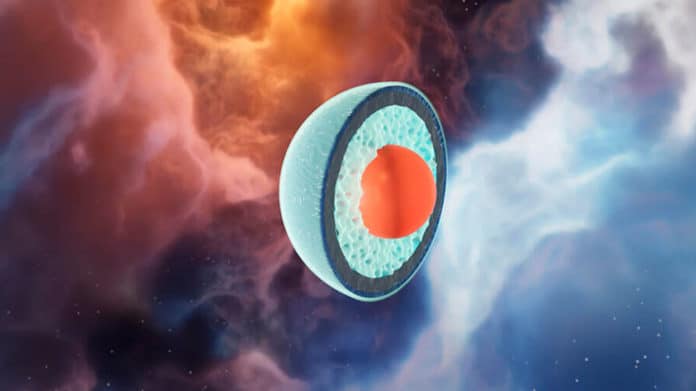Normal matter consists of atoms that have protons, neutrons, and electrons. In the case of neutron stars, the atomic matter is known to crumble into the dense nuclear matter in which the neutrons and protons are stuffed together so firmly that the whole star can be viewed as one single enormous nucleus.
But, it remains obscure whether the nuclear matter in the cores of neutron stars falls into the category of a more exotic state called quark matter.
Scientists from the University of Helsinki suggests that the answer is Yes.
In a new study, scientists found the evidence for the presence of exotic quark matter inside the cores of the largest neutron stars in existence.
They found the outcomes by combing recent results from theoretical particle and nuclear physics to measurements of gravitational waves from neutron star collisions.
The study suggests that the matter inside the core of the neutron stars more likely to resemble quark matter than to ordinary nuclear matter. Their calculations also revealed that in these stars, the diameter of the core identified as quark matter could exceed half of that of the entire neutron star.
Associate Professor Aleksi Vuorinen from the University of Helsinki’s Department of Physics said, “There is still a small but nonzero chance that all neutron stars are composed of nuclear matter alone. What we have been able to do, however, is to quantify what this scenario would require. In short, the behavior of dense nuclear matter would then need to be truly peculiar. For instance, the speed of sound would need to reach almost that of light.”
As mentioned above, two recent results in observational astrophysics play a vital role in this study.
In 2017, the LIGO and Virgo observatories detected, for the first time, gravitational waves generated by two merging neutron stars. This observation set a rigorous upper limit for a quantity called tidal deformability, which measures the susceptibility of an orbiting star’s structure to the gravitational field of its companion. This result was subsequently used to derive an upper limit for the radii of the colliding neutron stars, which turned out to be roughly 13 km.
Similarly, while the first observation of a neutron star dates back to 1967, accurate mass measurements of these stars have only been possible for the past 20 years or so. Most stars with accurately known masses fall inside a window of between 1 and 1.7 stellar masses. Still, the past decade has witnessed the detection of three stars either reaching or possibly even slightly exceeding the two-solar-mass limit.
Somewhere, the data about neutron star radii and masses considerably reduced the uncertainties associated with the thermodynamic properties of neutron star matter. This also led scientists to conduct this new study, where they combined astrophysical observations with state-of-the-art theoretical results from particle and nuclear physics.
Doing this led them to derive a precise prediction for what is known as the equation of state of neutron star matter, which refers to the relation between its pressure and energy density.
It is this rapid accumulation of new observational information that plays a crucial role in improving the accuracy of the latest findings of the Finnish research group, and in confirming the existence of quark matter inside neutron stars.
Further research is expected to reduce the uncertainties associated with the new results.
Journal Reference:
- Eemeli Annala et al., Evidence for quark-matter cores in massive neutron stars. DOI: 10.1038/s41567-020-0914-9
